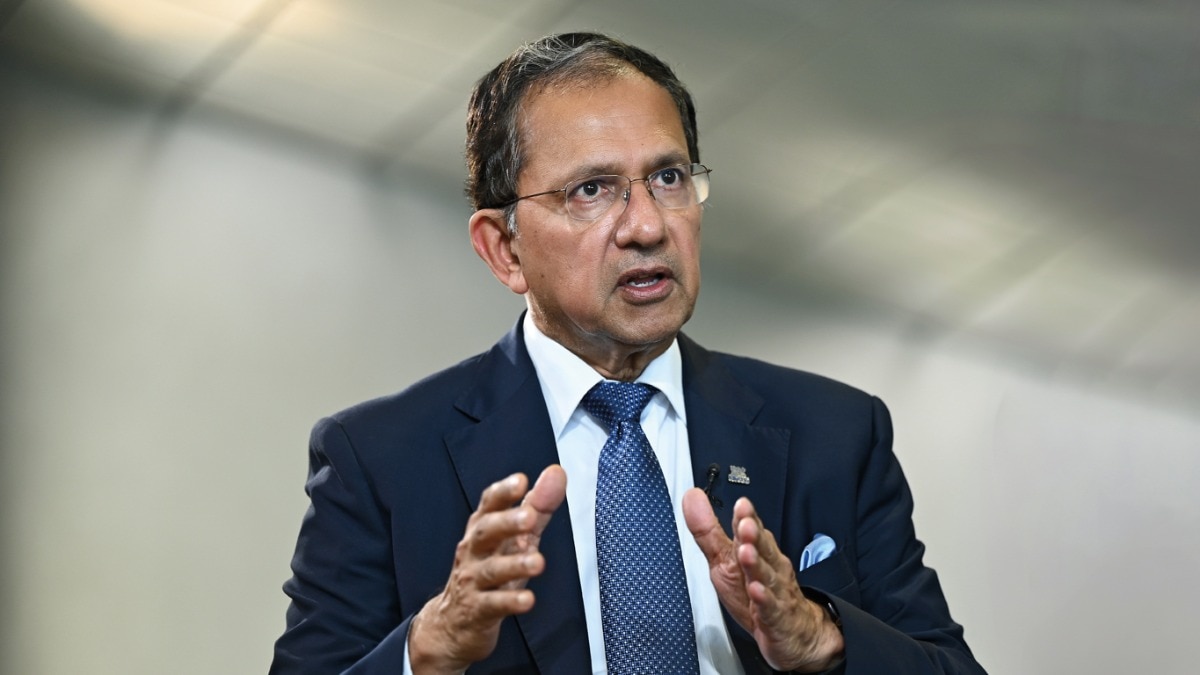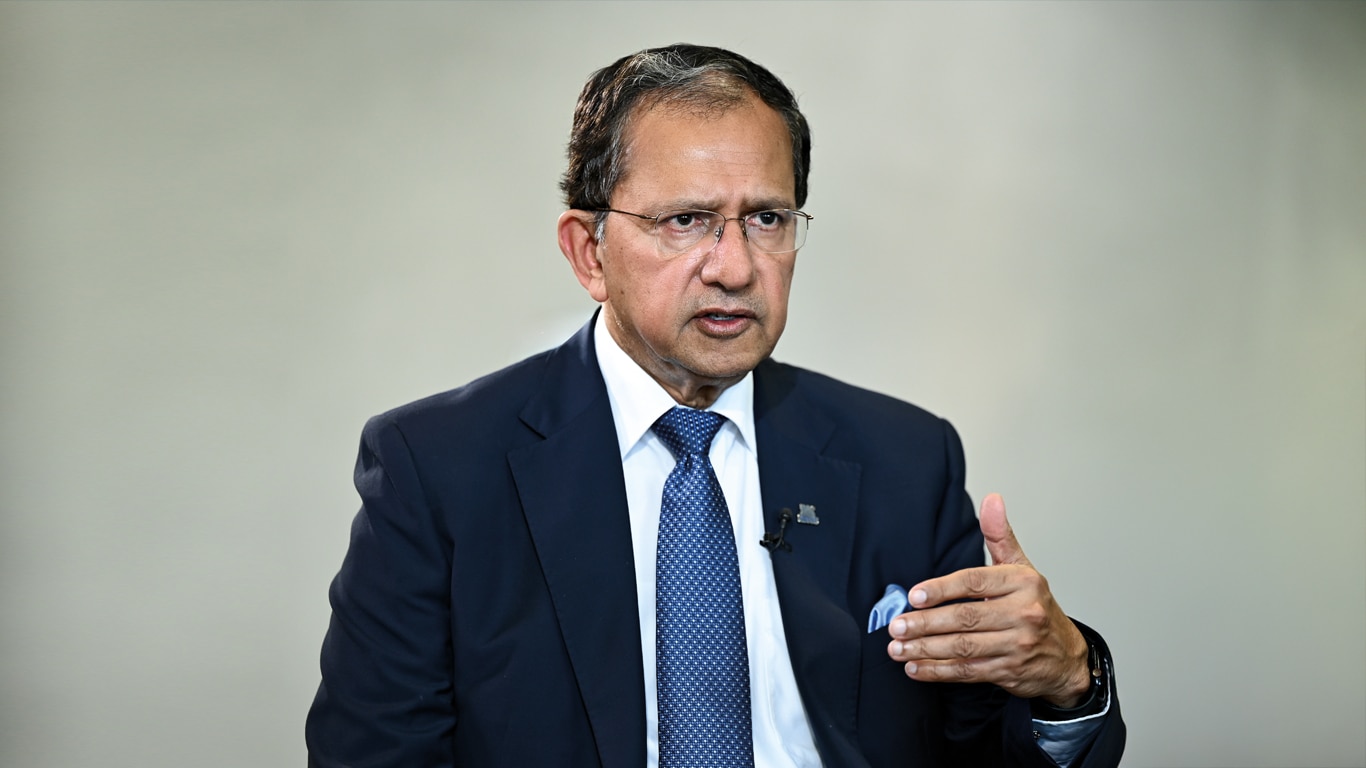
Sustainability is no longer a buzzword—it is a necessity for businesses today. Suresh Narayanan, Chairman and Managing Director of Nestlé India, talks to Karishma Asoodani about the FMCG major’s commitment to the environment. From its century-old relationship with Indian farmers to ambitious net-zero targets and cutting-edge eco-initiatives, Narayanan highlights how sustainability is embedded in Nestlé India’s DNA. Edited excerpts:
Q: How do you envision the role of leadership in driving sustainability in a country like India?
A: I think the role of leadership is more than just guiding the fortunes of a corporation. The role of leadership is also to instil a sense of hope, action and sustainability for corporate operations. And, in so far as it impacts the environment, it is an important role. Nestlé is blessed across the world with millions and millions of consumers for our brands. I think there is an inherent responsibility of the company not just in terms of shareholders but also in terms of the community and society we live in and that’s why sustainability has been such an important part of our journey.
Q: Can you share Nestlé India’s sustainability plans over the years given your long association with the brand?
A: Nestlé India has a century-long relationship with consumers, starting in 1912 as a small trading operation to becoming a major FMCG (fast-moving consumer goods) company. Behind brands like Maggi, KitKat, Nescafé and Munch is a strong agricultural connection. For example, 80,000–100,000 farmers in Punjab have worked with us for decades in dairy. Our Nescafé plant in Kodagu, Karnataka, sources sustainably from 5,000 coffee growers, and Maggi relies on 1,000–1,500 spice farmers across Gujarat, Rajasthan and Andhra Pradesh practicing sustainable farming. This farmer-company link is what we call responsible sourcing—a key pillar of sustainability that ensures high-quality, sustainably sourced raw materials for the long term.

Q: Has your sustainability journey changed over the last decade?
A: Sustainability must be in a company’s DNA—it’s a need, not something in a checkbox. I’ve been with Nestlé for 26 years, and even before, the company tracked key performance indicators (KPIs) on greenhouse gases, water, energy and effluents. Sustainable farming, packaging, manufacturing and logistics have been integral to our operations for decades, with impact scaling up over time.
Q: Does focusing on sustainability make it harder to manage operating costs?
A: Sustainability is essential, but consumers don’t pay extra for it. Their choices reflect how responsible they perceive a company to be. Inflation adds pressure on raw material and sustainability costs, but Nestlé benefits from economies of scale, advanced science and technology and strategic procurement to manage costs. Pricing adjustments happen only if needed, but sustainability commitments, both global and local, are never compromised.
Q: On the global net-zero commitment, where does Nestlé India stand?
A: The interim net-zero target is 50% reduction by 2030, aiming for net zero by 2050. India is progressing well. The biggest challenge is climate action in dairy, a major part of our portfolio. We’ve pioneered bio-digesters (used to break down organic waste and produce biogas and fertilisers) on dairy farms (3,000 to 5,000 installed), significantly reducing greenhouse gases and methane. If the plan continues, we’ll meet our global goals.
Q: What is Nestlé India’s strategy?
A: Our strategy focuses on three areas. First is sustainable sourcing. Be it coffee, milk, spices or oils, 55–60% of our materials are sustainably sourced, with coffee nearing 100%. Then there is sustainable manufacturing and logistics. We use 100% renewable energy in factories, deploy electric fleets and work with partners on electric logistics. Manufacturing improvements have reduced water use by 20–25%, saving 190,000 cubic metres last year, and ensured energy savings of 89,000 gigajoules. Third is recycling and plastics. Last year, we generated 25,000 tonnes of plastic packaging, and collected and recycled as much as possible. We’ve been plastic neutral for four years, reduced virgin plastic use by 900 tonnes; 59–60% of packaging is designed for recycling. Recycling facilities are limited but improving, with government support.

Q: Has it been easy given the resource and technology constraints?
A: It’s challenging; much recycling isn’t yet environmentally optimal. We’ve urged policymakers and see growing awareness and action.
Q: You highlighted four areas: climate, packaging, water and sourcing. Why these?
A: Sustainability is a business imperative, not something that is “nice to have.” It’s embedded in Nestlé’s DNA. We have a sustainability steering committee that I chair, overseeing projects in these four areas. These initiatives are business-driven, monitored, KPI-focused, and transparently reported.
Q: Your BRSR report for FY24 was majorly inclined towards renewable energy and recycling. What new strategic sectors have you tapped in FY25?
A: One of the things we would look at tapping, and which ties in with the globally enlisted large initiatives, is to start collaborating with other like-minded companies on sustainability projects. It is a little bit like CSR (corporate social responsibility) initiatives. If you partner with companies, you are able to make a much bigger impact on either rural water or education or sanitation. In the same manner, if you are able to come together as companies, there is a bigger play that can be had on sustainability as well.
Q: Have you tied up with early-stage start-ups or companies that are deep down in sustainability along with technology?
A: We have had a few initial initiatives, especially in the packaging area. Some of it is very nascent at this stage. For example, in the use of seaweed as a sustainable packaging source, there was start-up that we worked with. Similarly, there are projects we are working on in the use of wood and other such waste in designing sustainable packaging material.

Q: Where do you see Nestlé India in the next five years regarding responsible sourcing and climate commitments?
A: Sustainability is not a one-time effort; it’s a marathon. We believe in consistent discipline, focus and hard work. The four key initiatives I mentioned earlier will remain central to our efforts. We aim to be the best-in-class in sustainability, but never lose sight of affordability and relevance for consumers. Ultimately, our goal is to offer products that are relevant, sustainable, affordable and provide excellent value. This means balancing cost, sustainability, pricing and value—an equation that evolves but always strengthens our connection with consumers.
Q: How do you strike a balance between sustainability and affordability of products?
A: I think this is where the equation comes between the sustainability cost and how much of it are we able to mitigate through either technology, recipes or optimisation of usage. In some categories, this can be managed quite effectively and efficiently. In some others, there are short-term impacts and, therefore, it may not be the most optimal in certain cases.
But in most of the portfolio, we try and balance out sustainability costs with raw material inflation through the possibility of pricing, and then to look at the net equation after that to see what is it that we can afford from a business point of view.
@tweettokarishma